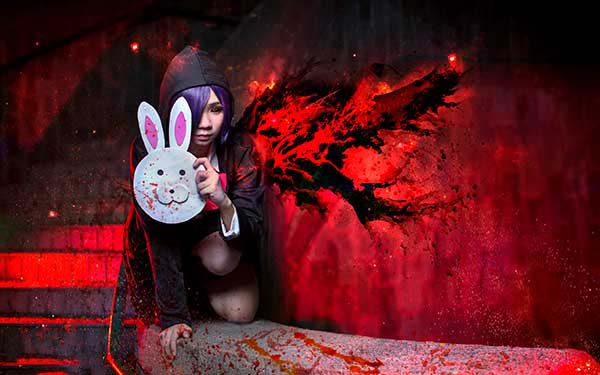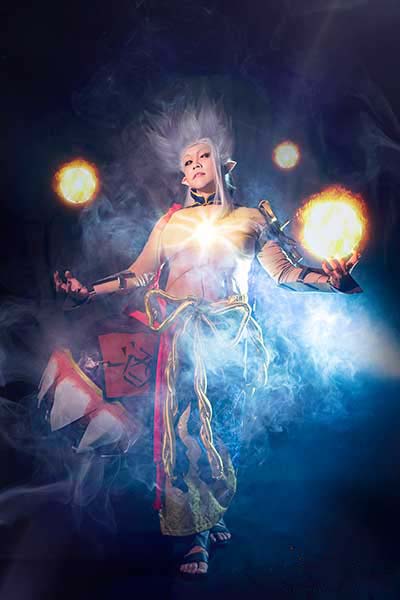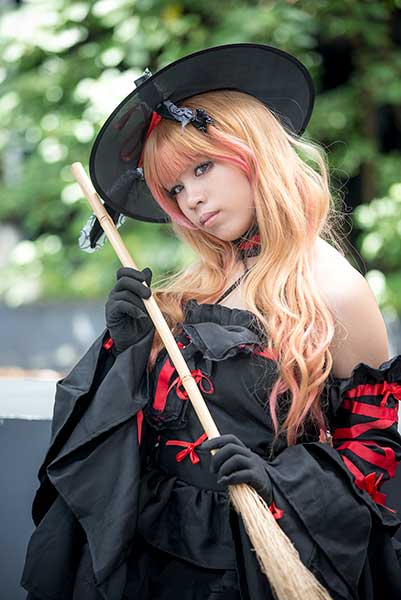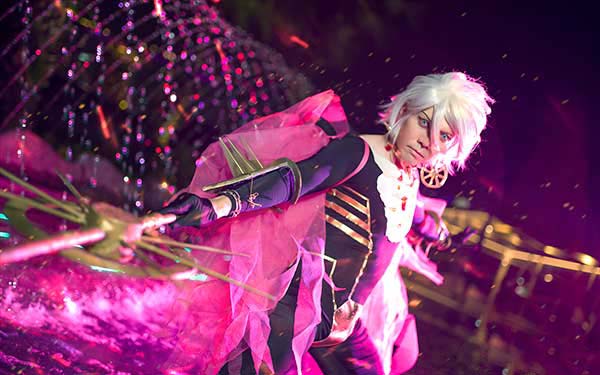INTRODUCTION
FROM CASUAL TO SERIOUS
If you like anime, manga, comics, and computer games, then you have probably heard of cosplay – Where talented folks called cosplayers bring your favorite characters to life by creating awesome real-life costumes and props. You might also have heard of cosplay conventions, maybe even attended one yourself.
That was how I first started my journey into cosplay photography as well, by taking a few random shots at a convention out of curiosity and fun. That eventually led to a 10 years hobby of cosplay photography, an exciting craft but painful for the wallet at the same time.
As for you guys who are looking and wondering about what cosplay and cosplay photography is, I shall share some of my thoughts in this introduction, and that will hopefully shed some light on the mystery for you. Read on to find out!
WHAT IS COSPLAY?

The word Cosplay (コスプレ) has its roots in Japan and it is a combination of the words “costume” and “play”. Maybe the words “costume” and “roleplay” will make more sense in English. As the term implies, cosplay can be a hobby or profession where people wear costumes to create the real-life counterpart of game/movie/anime/cartoon characters – We call these people cosplayers.
Noticed that I used the word “profession” to describe cosplay? Yep, cosplay became a global sensation along with the rise of the Internet, gaming, online videos, streaming, and social media. While it is uncommon, but some cosplayers actually make a full time living off cosplaying, appearing as guests in conventions, and accepting sponsorships.
That, of course, only scratches the surface of cosplay. Understanding the character, posing, makeup, costumes, and props are also a big part of the magic formula. Some cosplayers can spend months just to make their costumes and props, just to make sure that they are perfect – So for you guys who are still thinking “cosplay is child’s play”, it is time you rethink twice about the definition of “cosplay”.
WHAT IS COSPLAY PHOTOGRAPHY THEN?

My short and “captain obvious” definition for cosplay photography is “taking photos of cosplayers”. Yep. Before the angry Internet hater trolls start to bang on their keyboards, I will add that I think cosplay photography as more of a subject – I.E. “cosplay is the subject of what we are photographing now”. It is not a school of photography, it is not a style of photography.
So just like the old saying goes “anyone with a camera can take photos, but not anyone with a camera is a photographer” – Anyone can enjoy cosplay photography, take a few random shots at a convention, but the art of taking good cosplay photos is something that you need to work your way up.
Just as the other “types of photographers”, cosplay photographers can range from hobbyists to professionals. Although uncommon, there are actually photographers who are paid to cover conventions, take photos for posters, and even collaborate with cosplayers to publish photo books.
Lastly, I will love to mention that there are some unwritten rules in the world of cosplay photography. So if you do not want to be the next infamous cosplay photographer:
- Respect the privacy of cosplayers, ask for permission before shooting.
- Do not force cosplayers into giving contact information or ask for “private” shoots.
- Let the cosplayers rest. If they reject you, then just let it be.
- Stalking is a big no-no. Well… Maybe being a “harmless stalker fan” is good. 😆
THE VARIOUS CAMPS
As I have last mentioned that “cosplay photography is a subject”, it is thus interesting that everyone is free to apply all kinds of creative tricks in cosplay photography – Black and white, environmental portrait, high key, low key, and whatever that pleases you. However, I will still broadly categorize cosplay photography into 3 “camps”:
EVENT SHOTS 
The humble event shot is pretty much where every cosplay photographer starts with. Well, there is not too much “complicated stuff” behind this kind of shot. Just go to a convention, whip out your camera, ask for permission, and take a few quick snapshots.
As simple as it may sound, it is easy to get random event shots, but good shots often quite difficult to achieve. The convention halls are always crowded with people, have dim lighting, and sometimes even a mix of random lights with different colors. Photographers usually only have a few minutes of the cosplayer’s time, and to get the correct settings is a challenge.
But it is not that event photos are all bad, it is just that they carry a different vibe. They are often more candid, spontaneous, and fun; They often capture the atmosphere of the event, much more in a photo-journalism manner.
CASUAL & PORTRAIT SHOTS

This is “one step up” from the event shots, where we “hijack” cosplayers for a private shoot. Casual and portrait shoots put all the attention on the cosplayers, trying to catch “the essence” and portray the character instead of “just snapshots”.
Unlike the event shots, casual and portrait shots require a certain degree of planning and communications. The smart cosplay photographers will know well enough to isolate the cosplayer, prevent a busy background with people walking all over, do research on the character, and even look for good shoot locations that match the character.
The even smarter cosplay photographers will do some post-processing on the photos after the shoot – Which can be anything from retouching, to tweaking the exposures, correcting the colors, and maybe even some special effects. Every photographer has their own take, so some might just use 10 minutes to batch process all the photos, a few others might take labor-intensive hours.
CINEMATIC & PRODUCTION SHOTS

This is the kind of style that I have personally adopted after years of shooting. I guess you can call it the gamer’s ego of “don’t just play the game, own it, win it”. As you can see, this is where we do a “full-blown production” with a lot of effort going into just one shoot. A production shoot usually involves:
- Pre-production work of finding suitable shoot locations.
- Scouting the location before the shoot.
- Applying for permits if required, or booking studios for shoots.
- Research on the characters.
- Packing up and preparing for the shoot – Camera, lenses, lights, water, smoke, and props.
- Post-production of editing the photos. Retouching, color correction, color grading, adding effects.
But the results are usually “poster-worthy” shots. Worth it.
LINKS & REFERENCES
That’s it for this short guide, here are a couple of extra links that may be useful to you.
CLOSING
WHAT NEXT?

We have come to the end of this introduction, and this is, by all means, not an authoritative definition of cosplay photography. Personally, I do think that cosplay photography is still in the infant stages, and not really a form of “recognized photography” in the world yet.
But who knows? As cosplay gains more momentum and popularity, good cosplay photographers will rise too. There are so many creative options, and so many possibilities that cosplay photography can take shape into.
What will your cosplay photography be like? What will your definition of cosplay photography be? There is only one way to find out – Keep on shooting.
